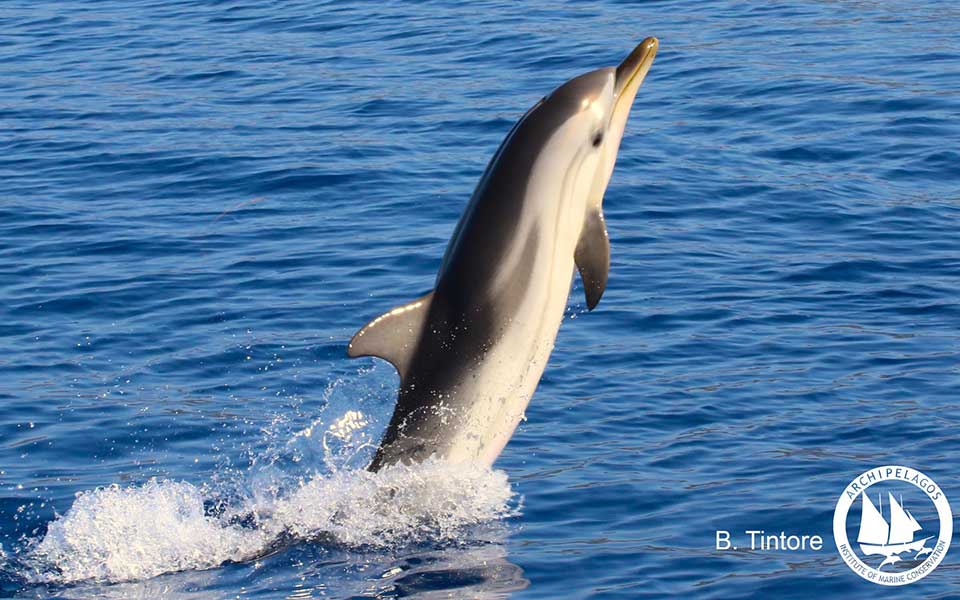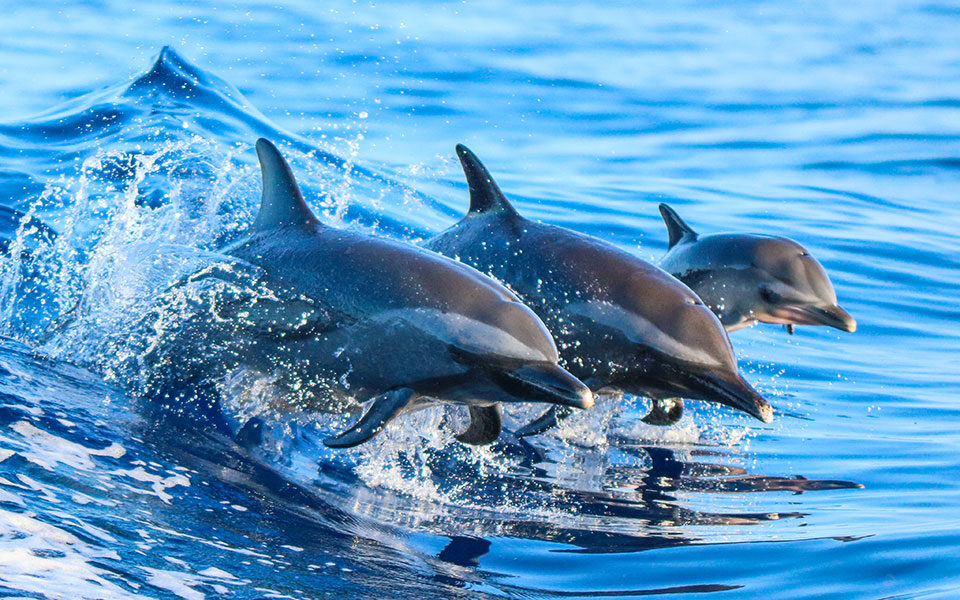“We often encounter large groups of them. We are very lucky that significant dolphin populations still survive in the Greek seas,” says Anastasia Miliou from the Archipelagos Institute of Marine Conservation. But she stresses that we should not rest on our laurels and is quick to explain: “We have well-sized populations, but the common dolphin, for example, which is recorded in the northern, southern and eastern Aegean has already disappeared from the Ionian Sea. Today, this dolphin is no longer ‘common,’ and the Mediterranean population of this species has also declined.”
These highly charismatic animals form multiform social groups and subgroups according to their characteristics. “Subgroups separate for a while or longer. We see groups with adults that are fast at swimming and fishing. We also see mixed groups with juvenile and adult dolphins, which act as a ‘training team’ for the younger dolphins. In any case, their mobility is shaped by where their food is located and where the dangers are located.”
According to Miliou, the most plentiful of the four dolphin species living in Greece is the bottlenose dolphin, “which we find in the open sea in large pods. The ash dolphin is a lesser-known species that is found in small migratory groups in deeper water areas.
The bottlenose dolphin is seen mostly in shallow waters and is the species that most often ends up in fishing equipment and is, therefore, the most vulnerable of all. Bottlenose dolphins are drawn to parts of the sea where fishermen dump fish because of overfishing and get caught in the nets, so they end up being destroyed. However, dolphins move throughout the entire range of the Greek seas – in the Ionian and Aegean, as far south as Crete.

© Archipelagos Institute: Facebook
Apart from fishing nets, other major factors threatening dolphin populations are plastic pollution and noise pollution on the seabed. The sound pollution caused by ships, boats (especially large speedboats), etc., is particularly extreme in many areas and causes numerous problems for these intelligent marine mammals whose communication is based on sound.
Miliou underlines that: “It is a paradox that in 2022, at a time when so much is being said about protecting the environment, that we as a society continue to tolerate the ongoing degradation of our seas. Despite the fact that we are not implementing any substantial measures to protect them in practice, we are lucky enough to have significant populations of all four dolphin species surviving in the Greek seas. And especially at a time when many dolphin populations are declining alarmingly in other parts of the Mediterranean.”
This article was previously published in Greek at kathimerini.gr.












